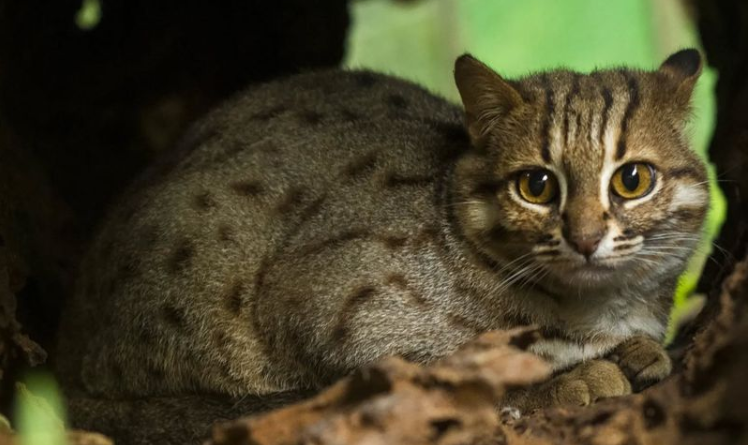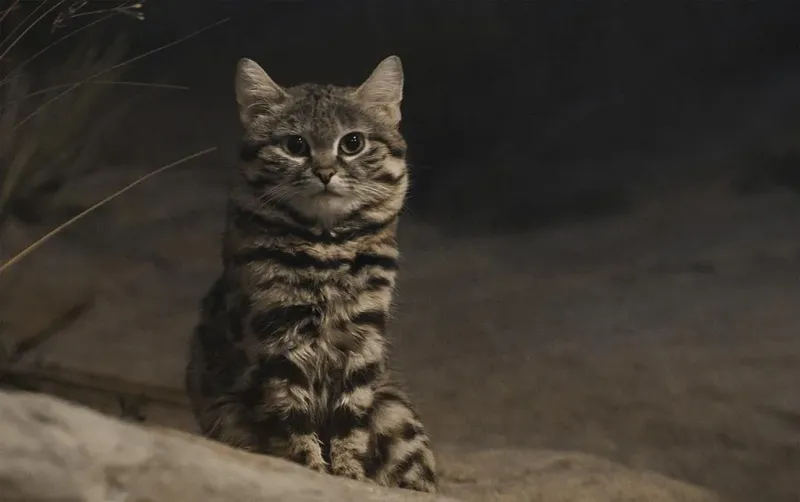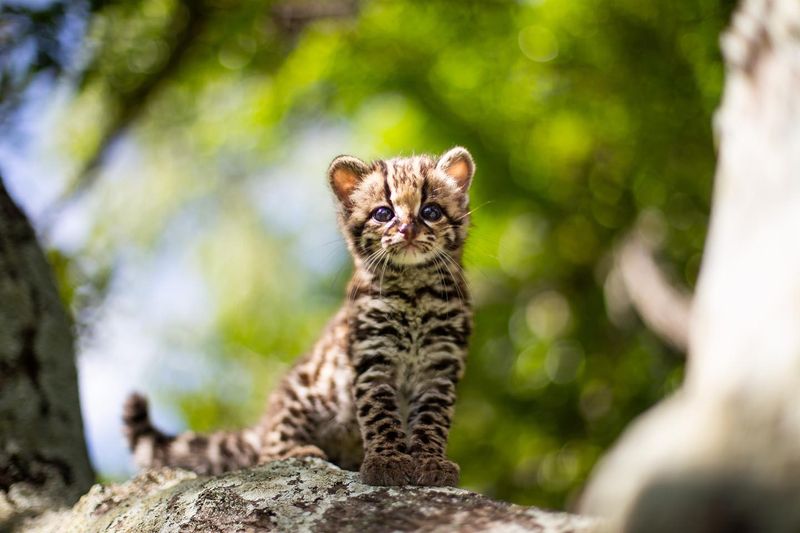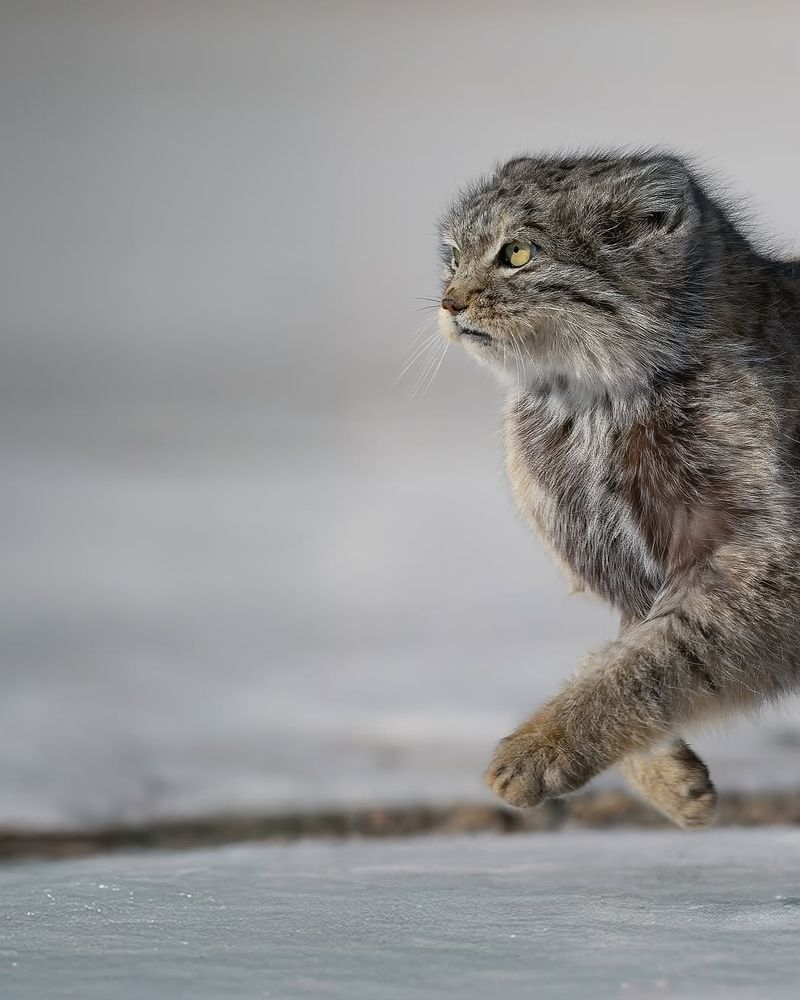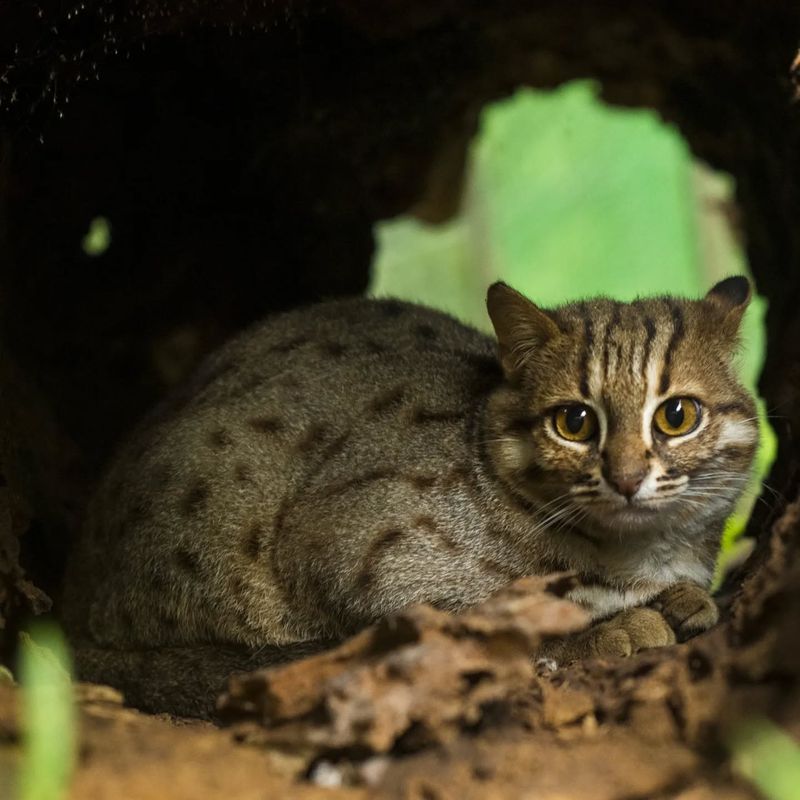📖 Table of Content:
For most people, the image of a wild cat conjures up visions of powerful tigers stalking through jungle foliage or majestic lions lounging on the savanna. But not all wild cats are giants of the animal kingdom—some are small, elusive, and eerily similar to the feline companions curled up on our sofas. Their charming looks can be deceiving, masking a wild and often fierce nature beneath the surface.
These lesser-known wild cats often fly under the radar, not just because they inhabit remote or harsh environments, but because their physical resemblance to domesticated breeds is uncanny. From their tabby-patterned coats to their playful expressions, it’s easy to mistake them for house cats at first glance. Yet these animals are anything but tame. They lead secretive lives, are expert hunters, and often thrive in environments most domestic cats would never survive in.
What makes them particularly fascinating is this duality: cute enough to make you want to reach out and pet them, but wild enough to make that a very bad idea. Whether it’s their size, markings, or gentle-looking eyes, these cats blur the line between wild and domesticated. Here are seven of the most deceptive wild cats—species that might fool even a trained eye into thinking they belong curled up in a sunlit window, when in fact, they belong to the wild.
1. African Black-Footed Cat
Despite its adorable appearance, the African black-footed cat is a ruthless predator known for its hunting efficiency. Weighing no more than a large house cat, it’s one of the smallest feline species in the world. Its fur pattern of dark spots on a sandy or tawny coat resembles that of a domestic tabby. Don’t let the size fool you—these cats are known to kill prey every 30 minutes during nightly hunts, sometimes taking down animals larger than themselves. They are native to the dry grasslands and savannas of southern Africa, where they live solitary and secretive lives. Known to travel up to 20 kilometers in a single night, they are tireless and precise. Few predators combine such a cute appearance with this level of raw ferocity.
2. Sand Cat
Looking more like a cuddly toy than a wild animal, the sand cat is perfectly adapted to some of the harshest desert environments on Earth. With thick fur on the soles of its feet to protect against hot sand and extreme temperatures, this feline is both delicate in appearance and rugged in behavior. Its wide head, oversized ears, and large amber eyes give it an irresistibly sweet look. Surprisingly elusive, the sand cat is rarely seen and even more rarely studied in the wild. It hunts small mammals, reptiles, and insects under the cover of night and can survive long periods without water. Despite its size and demeanor, it can produce deep, guttural growls and is fiercely territorial. Those who encounter it are often struck by how pet-like it seems—until it disappears into the desert with ghost-like swiftness.
3. Margay
Climbing trees with acrobatic grace, the margay is one of the few wild cats capable of descending a tree headfirst, thanks to its flexible ankles. This arboreal marvel resembles a miniature ocelot, with soft golden fur and dark rosettes that make it look like an exotic pet. Unlike many wild cats, it has a long tail that aids in balancing as it navigates the rainforest canopy. Though it may look gentle, the margay leads a solitary life and is rarely spotted in the open. Its eyes, disproportionately large for its head, enhance its night vision and add to its kitten-like charm. Instead of roaring, it emits bird-like chirps and meows, another trait that makes it seem tame. Its agility and stealth, however, remind us that it is pure predator at heart.
4. Fishing Cat
Wading into wetlands with an uncanny confidence, the fishing cat is one of the rare felines adapted to an aquatic lifestyle. Its dense fur is water-resistant, and its partially webbed feet make it a powerful swimmer. With a stocky build and spotted coat, it might look like a heavier version of a house cat—but appearances can be misleading. This cat doesn’t shy away from water and is known to dive in after fish, frogs, and even birds. Found in South and Southeast Asia, it occupies marshes, mangroves, and riverbanks where it rules its watery domain. Unlike domestic cats, which often fear water, the fishing cat thrives in it and uses it as a hunting ground. Watching one stalk its prey underwater is both mesmerizing and a reminder of its untamed instincts.
5. Pallas’s Cat
Sporting a face that looks perpetually disgruntled, Pallas’s cat (or manul) is a master of disguise and attitude. It has the densest fur of any cat species, perfectly suited for the freezing mountains and grasslands of Central Asia. Although it resembles a fluffy domestic longhair, its behavior is far from sociable. With short legs, small ears set low on the sides of its head, and a flat face, it has an almost cartoonish appearance. These adaptations make it nearly invisible among the rocks and snow of its native range. Known for being solitary and elusive, it spends most of its life in silence, avoiding confrontation and rarely being seen. While its appearance might trigger a desire to cuddle, its wild spirit and reclusive lifestyle make it anything but approachable.
6. Rusty-Spotted Cat
Tiny enough to fit in the palm of your hand as a kitten, the rusty-spotted cat is one of the smallest wild cats in the world. Found in India and Sri Lanka, this feline is often mistaken for a domestic kitten due to its size and delicate features. It has a soft, grayish coat with faint rust-colored spots, and its wide eyes give it a perpetually innocent expression. Nocturnal and extremely shy, it is rarely seen in the wild and usually hunts insects, small rodents, and birds. Despite its small frame, it’s a quick and agile predator capable of jumping great distances. Its preferred habitat includes dense forests and rocky areas where it can hide easily. The juxtaposition of its cuteness and its fierce independence makes it one of nature’s most deceptive felines.
7. Serval
Towering over domestic cats with its long legs and lean frame, the serval looks like a wild version of a supermodel feline. Native to Africa, this cat is built for speed and precision, using its large ears to detect prey moving underground. Its golden-yellow coat is adorned with black spots and stripes, giving it an elegant yet primal appearance. Sometimes mistaken for a large breed of domestic cat or a Savannah hybrid, true servals are wild and not meant for life indoors. They can leap several feet in the air to catch birds and often rely on their acute hearing to locate rodents in tall grass. Unlike domestic cats, servals are intensely territorial and require vast hunting grounds. Their beauty is undeniable, but so is their wild nature—something even exotic pet enthusiasts often learn the hard way.
